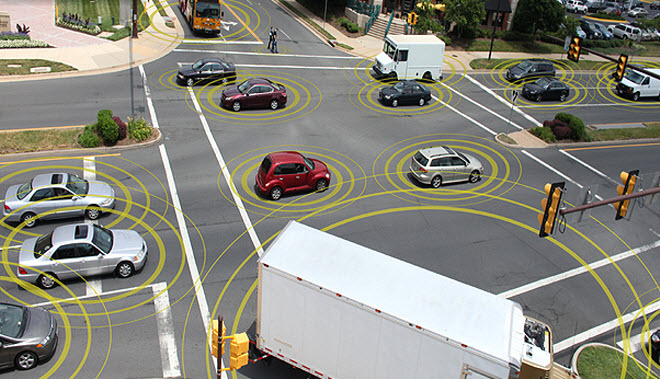M2M Vehicle Communication is the future of the automobile sector that holds many surprises for the consumers as well as the car manufacturers. Most of these surprises are pleasant ones but a few of them may turn out to be quite different from what we have planned. M2M technology enables machine-to-machine communication of both wireless as well as wired systems of compatible formats. When we add the M2M technology with the Internet of Vehicles then things might get a bit complicated at first as it happens with every other innovation but if we act prudently then it might turn out to be the next big leap for automotive technology.
But, likewise for every technological disruption, there are many underlying challenges and road-blocks for M2M Connected Vehicles to get effective. There are issues related to proper standards, regulations, hardware, software, plaguing internet services, telecom infrastructure, etc. that are yet to be resolved and dealt by tech evangelists and innovators to make M2M Connected vehicles the next big technological disruption. Let’s talk about a few of the challenges:
- Multiple Devices and their Management: As ambitious automobile projects are piling up with desirable features like integrated internet and LAN connection, the number and types of devices that can benefit from this development is also increasing and this means when the connected cars will actually hit the roads, its network will be getting crowded with all sorts of devices and the interference that they might bring. There will be need for necessary standards for device communication, proper firewalls, and regulations to prevent the degradation of the network, coverage, and breakdown.
- Regular Software Upgrades and its Co-Ordination: Most of software companies release their software updates annually or even bi-annually. But the automobile manufacturers usually take at least five years to come up with a new version of the existing model which seems justified since they have to take care of a lot of issues such as safety, cost, fuel efficiency, adherence to certain environmental laws, and so on. Hence if the latest model of the software installed within the car system or the smartphone does not support older car models then it might create a serious compatibility issue that might disrupt the entire functioning of the vehicle. Hence, both automotive OEMs (Original Equipment Manufacturers) and software organizations should plan ahead and come up with fitting solutions such as compatibility with older vehicle models, easy upgrades, etc.
- RAN and its Optimization: With the imminent cluttering of RAN (Radio Access Network) with various types of devices, especially during rush hour, the traffic jams may get tricky and more annoying than ever if necessary optimization is not done. The over-consumption of the limited data during peak hours may result in serious depreciation in the speed and performance of the network thus hampering all the activities of the connected car as well as the vehicle associated with it. Proper measures should be taken to optimize RAN so as to accommodate all the users within the network by killing idle tasks and freeing maximum bandwidth for ongoing activities.
- Diversity Support in Access Networks: The connected cars will usually come equipped with two or more active network services that may hinder each other if not configured properly. Hence proper professional assistance should be taken for efficient configuration of all the networks (Wi-Fi, LAN, LPWA, and others) that are routed atop the connected vehicle.
- Advanced Planning Tools: Intuitive tools might come handy while deciphering and solving the high-tech problems associated with connected vehicles in the future. They can be developed on the principles of Artificial Intelligence to enable them to assist better in the complicated M2M connected vehicle troubles of the future.
The teething troubles accompanies every new technology and M2M connected vehicles will be no exception but how much we let these challenges interfere with our user experience depends on us. The OEMs and technology experts can analyze and come up with the most apt solutions by rigorous brainstorming and troubleshooting the errors, one glitch at a time.

